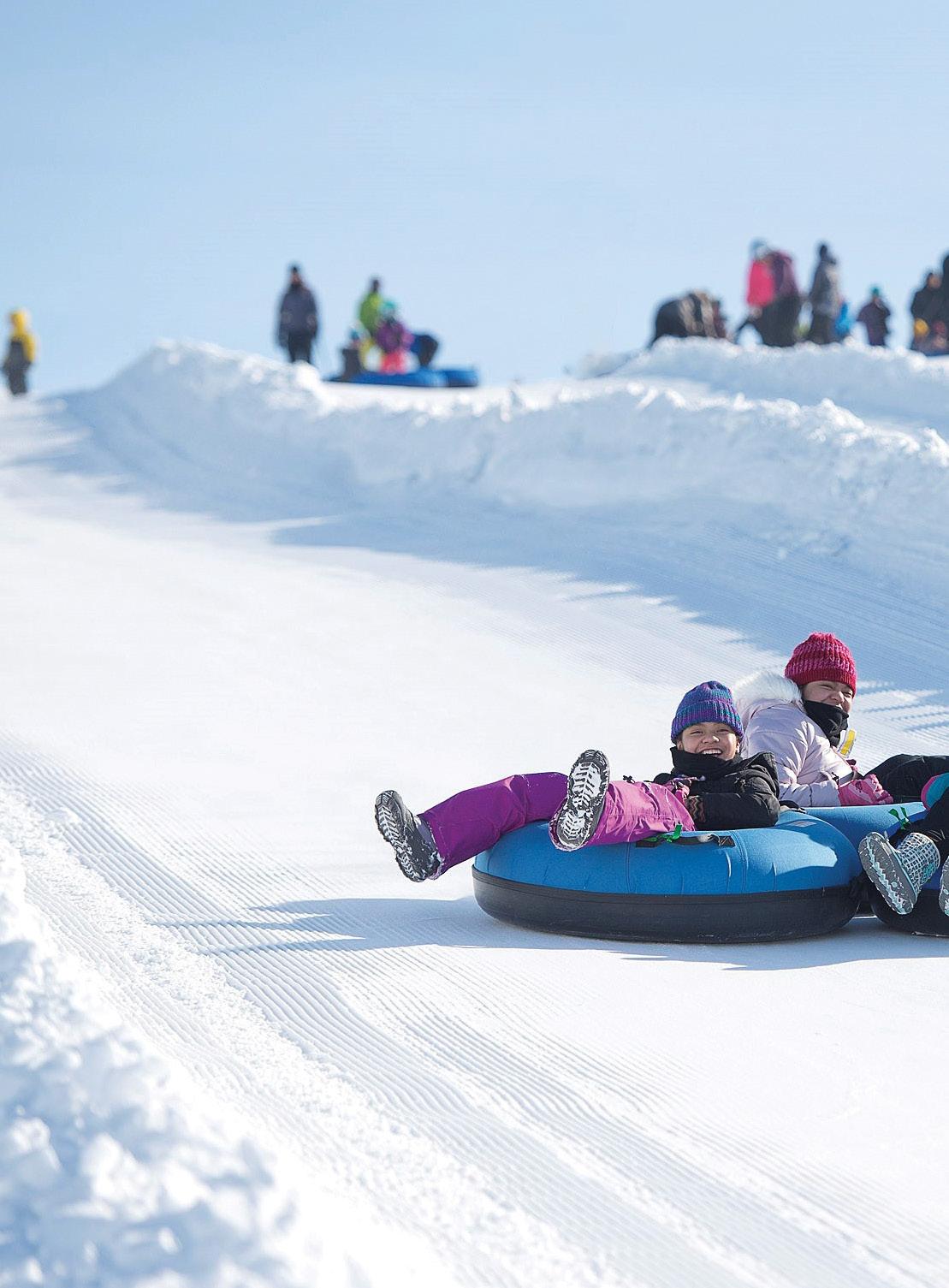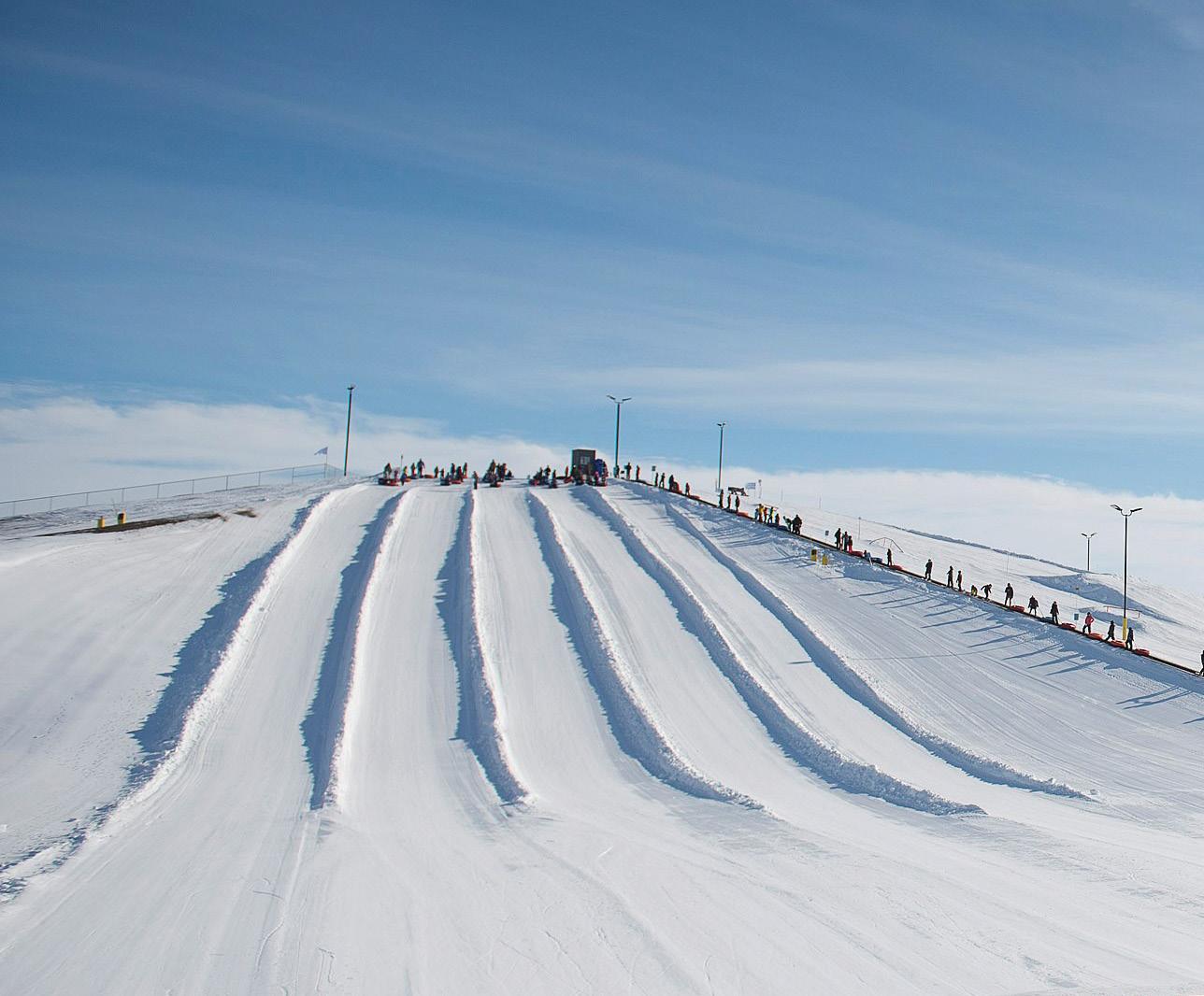
5 minute read
The Impossible—Optimism moves mountains in Saskatoon, Saskatchewan
The Impossible
The Optimists who created a ski hill
By Rachel Webb by Rachel Webb All Photos courtesy of Bret Klarenbach
Saskatoon might seem like the perfect place for winter sports. The city, Saskatchewan’s largest, gets more than 90 centimeters of snow per year. Hockey is popular, but the region’s flat prairie landscape means that options to fling oneself down a giant hill were lacking. Optimists in Saskatoon put their resources together, and discovered that Optimism can move mountains. Optimist Hill opened in February 2019. It was a day with temperatures at -25 degrees celsius (-13 degrees Fahrenheit), but that didn’t put a freeze on enthusiasm. “I’ll never forget the first person that walked up to our ticket window,” says Joe Van’t Hof, a member of the Optimist Club of Saskatoon, and vice president of the nonprofit that operates the hill. “They said ‘this is the greatest day ever. It’s my birthday and I have a ski hill that I can come to every day in the city of Sasktaoon.’” Optimist Hill became an idea when Ken Cenaiko went for a walk along a nearby riverbank and spotted the remnants of an old ski jump. Cenaiko, a member of the Optimist Club of Saskatoon, began to float the idea of starting a ski hill. What followed was six years of conducting market research, developing business plans, building partnerships and raising funds. The project’s first phase had a price tag of $3.3 million, some of which is still being raised. The area’s Optimist Clubs approached the city for collaboration, including $685,000 in funding, and they formed the OSP Community Development Corp. to run the project in Diefenbaker park. In addition to Van’t Hof, OSP’s leaders are President Brad Sylvester, Finance Director Terry McAdam and Director Rob Letts. To date, the Optimist Club of Saskatoon has contributed $100,000 and the Hub City Optimist Club has raised nearly $30,000, Van’t Hof said. In addition, organizers approached individuals and businesses for further monetary donations as well as equipment. Then, they had to move the dirt—147,000 cubic meters was transferred from the base of the park’s hill to the top. The facility has room for downhill skiing, snowboarding
and tubing, as well as equipment rentals. The next phase will be a comfortable chalet for visitors. “Thinking outside the box is really good and takes a lot of hard work to get over the line,” said Brad Babyak, recreation services manager for the city of Saskatoon. “I give credit to the Optimist group because they’re a small group but they put in a ton of hours to make it what it is today.” The best part is, Saskatoon residents can ride the city bus to the hill, and cost of a six-hour lift pass is a little more than an evening movie ticket. That means more time having fun, rather than traveling to the region’s nearest natural ski area, which is an hour’s drive out of town. “To see people spending time with families, with brothers, sisters, with the biggest smiles, enjoying the winter wonderland that we’ve created, there’s nothing that can replace it,” Van't Hof said. The site was only open for 29 days during its first season, but saw 6,500 visits. Winter sports often brings to mind skiers in slick suits and snowboarders flipping in midair. But Optimist Hill is going after a different market—everyday people who might have never skied before. Operators are also working with area schools and collaborating with other groups to offer activities for people with disabilities. In the US, most members of the National Ski Areas Association are traditional ski resorts, but community-based options are vital to the sport, says association spokeswoman Adrienne Saia Isaac. Snowsports facilities that are easily accessible are also a great way to promote physical and mental health during the winter.


Optimist Hill is part of the Saskatoon’s effort to adopt a Winter Cities strategy. The Winter Cities philosophy encourages cities to create opportunities for residents to live and have fun outdoors no matter the weather.


Top: Everyone is welcome at Optimist Hill, from jibbers (experienced boarders) to joeys (newcomers).
Bottom: Workers transferred 147,000 cubic meters of dirt from the base of a hill in Diefenbaker Park to the top to create a ski, snowboarding and sledding hill.
“You don’t have to go out and buy a lot of equipment,” Isaac says. “There are benefits to just being outside and letting your brain turn off from tech for a minute. You don’t have to be an Olympic athlete flying down a mountain. You can just go out in the snow and have fun.” Optimist Hill also fits into Saskatoon’s adoption of the Winter City concept. This idea urges cities to create vibrant, livable communities that thrive despite the temperature. This includes basics such as city planning, and encouraging residents to get outdoors for recreation, rather than spending the dark months of the year hibernating on the couch. Service organizations like Optimist Clubs have an important role to play as well,said Patrick Coleman, executive director of the Winter Cities Institute, an international advocacy organization. “We can’t rely on the city organizers to do everything, and we need other organizations to step up, whether it’s making a ski hill or making a skating rink or ski trail,” Coleman says. “Sometimes it just needs a volunteer effort and a little bit of money.” For the Optimists in Saskatoon, their effort was worth it. “It’s a game-changer for kids in Saskatoon,” Van’t Hof said. “Kids have got to get off the couch, get off the tablets and cell phones and go play outside.”










